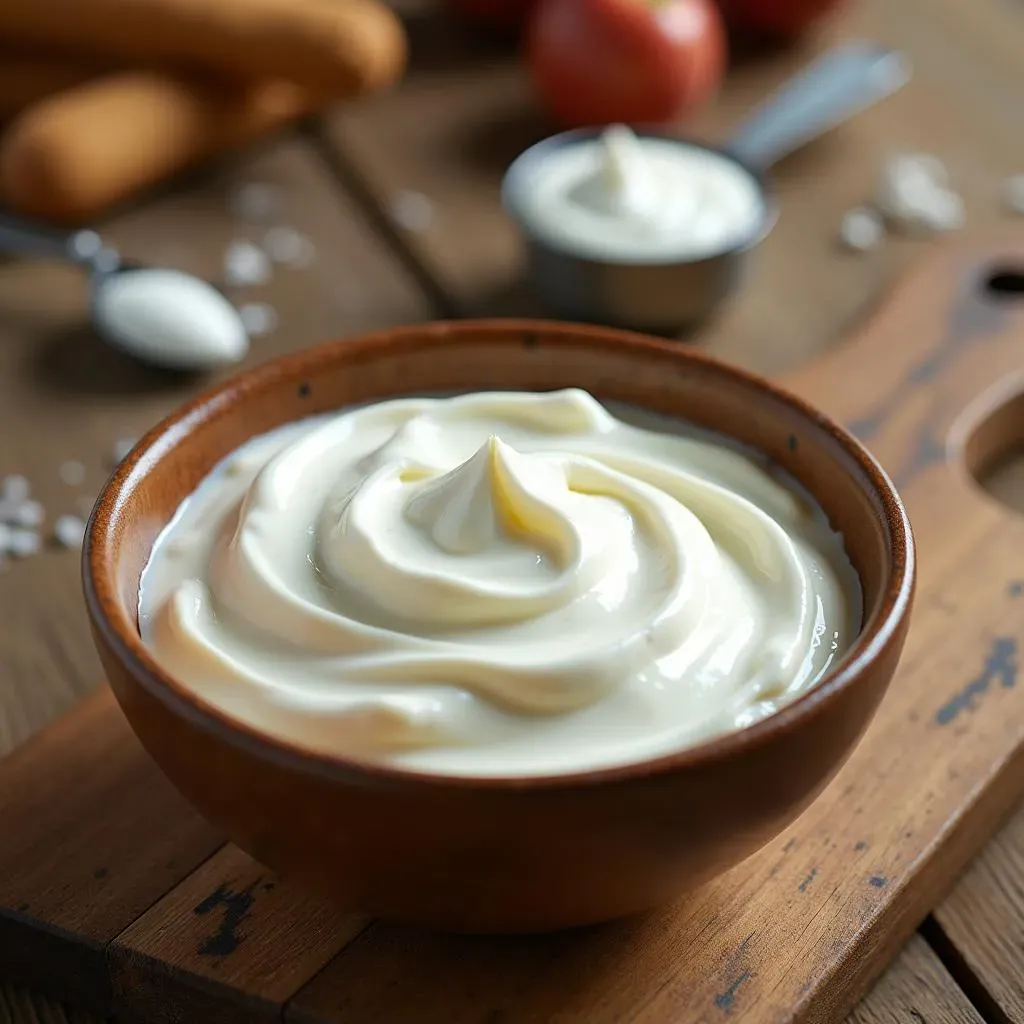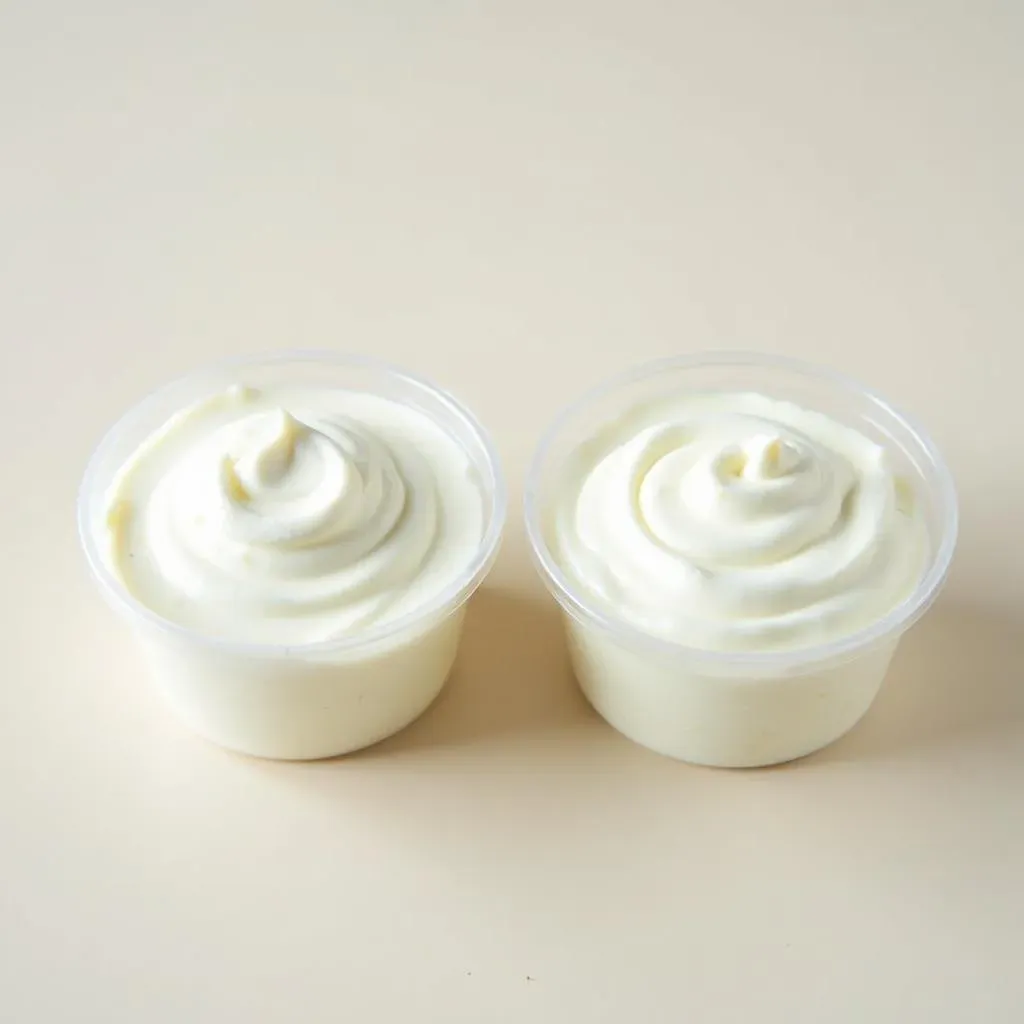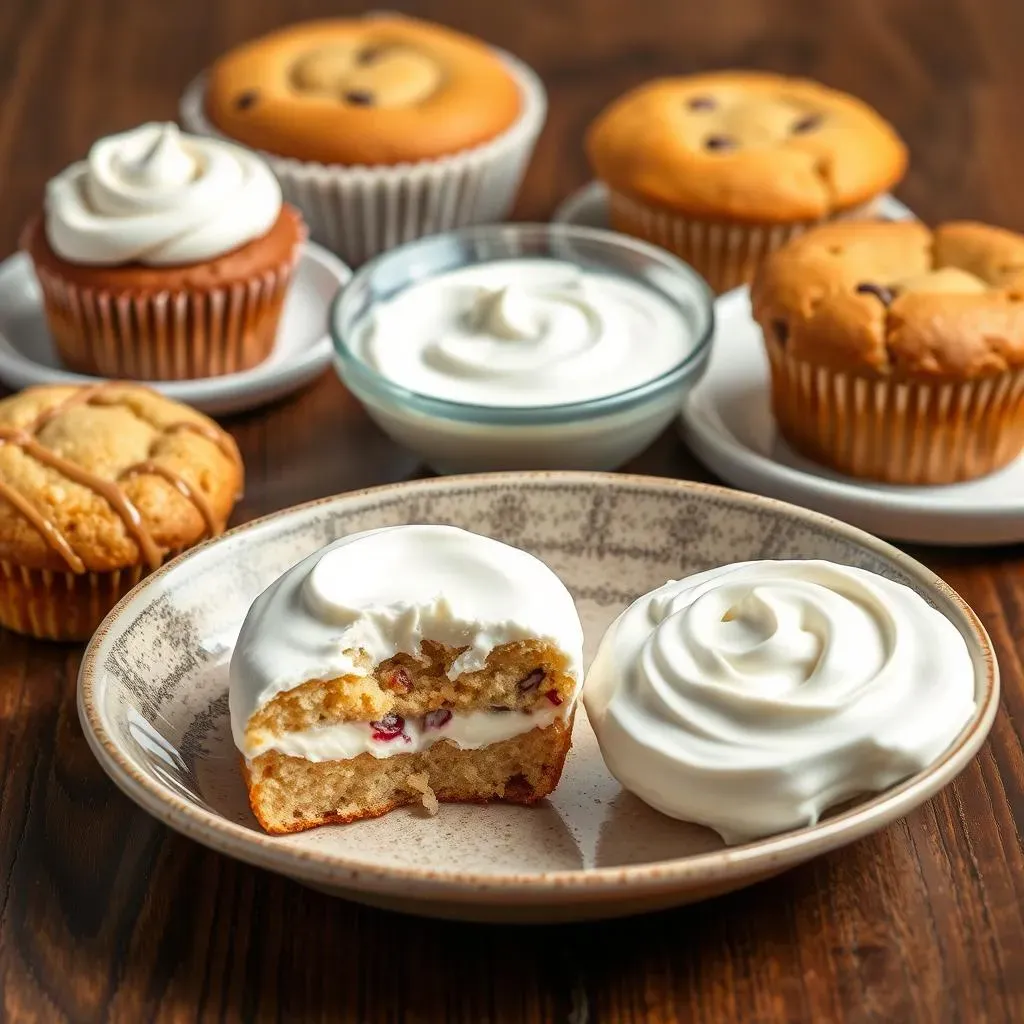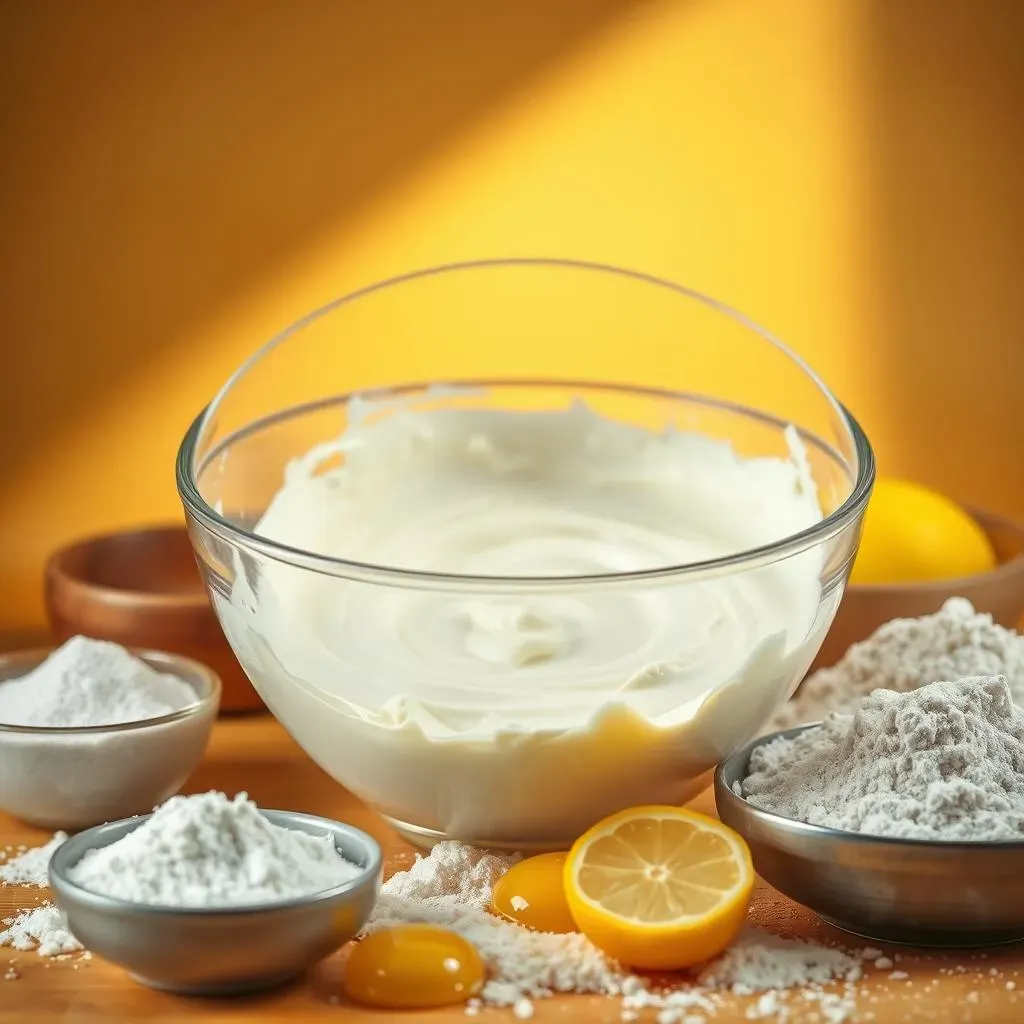Table of Contents
Ever stared blankly at a baking recipe, only to realize you're out of sour cream? Don't panic! This article tackles the burning question: can I substitute Greek yogurt for sour cream in baking? We'll explore the similarities and differences between these two dairy delights, examining their impact on texture and taste in your favorite baked goods. We'll delve into practical, step-by-step guidance on how to successfully swap Greek yogurt for sour cream, offering recipe adjustments and troubleshooting tips for consistently delicious results. Whether you're a seasoned baker or a kitchen novice, learning this substitution technique opens up a world of culinary possibilities, expanding your baking repertoire and saving you a last-minute dash to the grocery store. Get ready to unlock the secrets to achieving perfectly moist cakes, fluffy muffins, and creamy frostings, all while mastering the art of ingredient substitution. So, let's get baking!
Can I Substitute Greek Yogurt for Sour Cream in Baking?

Can I Substitute Greek Yogurt for Sour Cream in Baking?
The Great Sour Cream Swap: Is it Possible?
So, you're staring at a recipe, dreaming of delicious baked goods, but you're facing a sour cream shortage. Fear not, fellow baker! The answer is a resounding maybe. Yes, you *can* often substitute Greek yogurt for sour cream in baking, but it's not a simple one-to-one swap. Think of it like this: sour cream and Greek yogurt are cousins, not twins. They share some family resemblance – creamy texture and a slightly tangy flavor – but they have distinct personalities. Sour cream tends to be richer and tangier, while Greek yogurt can be thicker and sometimes a bit less acidic. The success of your substitution hinges on understanding these subtle differences and adjusting your approach accordingly.
The key to a successful swap lies in choosing the right type of Greek yogurt. Full-fat Greek yogurt is your best bet; its higher fat content helps mimic sour cream's richness and keeps your baked goods moist. Low-fat or nonfat options might leave your creations a little dry and less flavorful. Also, remember that Greek yogurt is generally thicker than sour cream. If your recipe calls for a very light and fluffy texture, you might need to thin the yogurt slightly with a little milk or buttermilk. For more info on buttermilk substitutions, check out our guide on substituting buttermilk for sour cream.
Ingredient | Sour Cream Characteristics | Greek Yogurt Characteristics |
|---|---|---|
Fat Content | Higher | Variable (choose full-fat) |
Texture | Creamy, smooth | Thicker, potentially needs thinning |
Acidity | More tangy | Less tangy, sometimes needs a boost |
Factors Affecting the Swap: Recipe Type and Desired Outcome
Not all baking recipes are created equal, and the suitability of a Greek yogurt substitution depends heavily on the recipe's specific ingredients and desired outcome. For instance, in cakes and muffins, where moisture is key, the higher fat content of full-fat Greek yogurt can be beneficial, leading to a moist and tender crumb. However, in recipes that rely on a specific level of tanginess, such as certain cheesecakes, the lower acidity of Greek yogurt might require adjustments, perhaps adding a touch of lemon juice to compensate. We'll explore specific examples later in the article.
Think of it like this: substituting Greek yogurt is a bit like choosing a substitute player in a basketball game. You want someone who can fill the role, but their strengths and weaknesses might differ slightly. A point guard might not be as strong rebounding as a center, but they can still contribute positively to the team's overall success. Similarly, Greek yogurt can be a great stand-in for sour cream, but it's important to be aware of its unique qualities and how they may impact the final product. Need more ideas on dairy swaps? Check out our article on using Greek yogurt in baking!
- Cakes and muffins: Generally a good swap, especially with full-fat Greek yogurt.
- Cookies: Can work, but may affect texture; experiment!
- Cheesecakes: May need acidity adjustment (lemon juice).
- Frostings: Can work well, depending on desired consistency.
Understanding the Differences: Greek Yogurt vs. Sour Cream

Understanding the Differences: Greek Yogurt vs. Sour Cream
Fat Content: A Key Difference
Let's talk fat, because fat is flavor (and moisture!) in baking. Sour cream typically boasts a higher fat content than even full-fat Greek yogurt. This richness contributes significantly to the creamy texture and moist crumb in baked goods. Greek yogurt, while available in full-fat versions, often has a slightly lower fat percentage. This difference can impact the final product, potentially leading to a drier texture if you're not careful. Choosing full-fat Greek yogurt is crucial for a closer approximation to sour cream's richness.
Think of it like this: sour cream is the decadent chocolate cake, while Greek yogurt is the delicious but slightly leaner fruit cake. Both are tasty, but the fat content significantly affects the overall experience. For a really detailed breakdown of dairy options, check out our ultimate guide on cream cheese substitutes – it's full of surprising options!
Characteristic | Sour Cream | Full-Fat Greek Yogurt |
|---|---|---|
Fat Content | Higher (around 20%) | Lower than sour cream (but still relatively high) |
Moisture Content | Higher | Lower |
Texture | Smooth, pourable | Thicker, more viscous |
Acidity and Tang: A Matter of Taste
Sour cream gets its name from its characteristic tanginess, a result of its lactic acid content. This tartness adds a delightful complexity to many baked goods. Greek yogurt also has some acidity, but it's often milder than sour cream. If your recipe relies heavily on the sour cream's tang, you might need to compensate by adding a touch of lemon juice or vinegar to your Greek yogurt substitute. A tiny amount goes a long way!
Consider this: sour cream's tang is a bold, assertive flavor, while Greek yogurt's acidity is more subtle and nuanced. A little extra lemon juice in your Greek yogurt can help bridge this gap, ensuring your baked goods retain their desired flavor profile. For more tips on dairy alternatives, you might find our article on creme fraiche substitutes helpful.
- Sour cream: More pronounced tangy flavor.
- Greek yogurt: Milder, less acidic taste.
- Lemon juice or vinegar: Can boost acidity in Greek yogurt.
Texture and Consistency: Achieving the Right Feel
Sour cream has a smooth, creamy, and relatively pourable consistency. Greek yogurt, on the other hand, tends to be thicker and more viscous. This difference in texture can impact the final product. If your recipe requires a lighter, airier texture, you might need to thin your Greek yogurt with a bit of milk or buttermilk to achieve the desired consistency. For recipes where a thicker texture is preferred, full-fat Greek yogurt is a great choice.
Think of it like painting: sour cream is like using a smooth, flowing acrylic, while Greek yogurt is like using a slightly thicker, more textured oil paint. The choice depends on the desired effect. For more advice on baking substitutions, check out our guide on substituting buttermilk for sour cream in baking – it might surprise you!
"The key is to understand the nuances of each ingredient and how those nuances will affect your recipe." - Anonymous Baking Enthusiast
Successful Substitutions: Recipes and Techniques for Baking with Greek Yogurt

Successful Substitutions: Recipes and Techniques for Baking with Greek Yogurt
Cakes and Muffins: A Moist and Tender Result
Cakes and muffins are often fantastic candidates for a Greek yogurt sour cream swap. The higher fat content in full-fat Greek yogurt helps keep these baked goods moist and tender, preventing dryness. Remember to use full-fat for the best results! The slightly less tangy flavor of Greek yogurt works well in many cake and muffin recipes, adding a subtle creaminess without overpowering other flavors. You might find that you don't need to make any other adjustments at all!
For instance, in a classic vanilla cake, substituting Greek yogurt for sour cream often results in a beautifully moist and tender crumb. The subtle tang of the yogurt complements the sweetness of the cake without being overpowering. If you're using a recipe that emphasizes a tangier flavor profile, you might consider adding a small amount of lemon zest or extract to enhance the flavor. For more ideas on yogurt substitutions, check out our article on Greek yogurt substitutions in recipes.
- Use full-fat Greek yogurt for best results.
- Consider adding lemon zest or extract for extra tang.
- Experiment with different flavors to find your favorite combinations.
Cookies: A Textural Adventure
Cookies present a slightly more nuanced challenge. While you can absolutely substitute Greek yogurt for sour cream in many cookie recipes, be prepared for a potential shift in texture. Greek yogurt's thicker consistency can result in slightly chewier cookies compared to those made with sour cream. This isn't necessarily a bad thing; many people prefer chewier cookies! However, if you prefer a crispier cookie, you might need to adjust the baking time or temperature slightly.
Experimentation is key here! Start by substituting a portion of the sour cream with Greek yogurt and see how it affects the texture. You can always adjust the amount in subsequent batches. Remember, baking is a science, but also an art – don't be afraid to get creative and find what works best for you. Looking for more baking hacks? Check out our complete guide on cream cheese substitutes – it's a game-changer!
Cookie Type | Greek Yogurt Effect | Possible Adjustments |
|---|---|---|
Chewy Cookies | Enhanced chewiness | None needed, often preferred! |
Crisp Cookies | Slightly chewier | Reduce baking time/temp |
Frostings and Cream Cheese-Based Fillings: Creamy Perfection
Greek yogurt can be a fantastic addition to frostings and cream cheese-based fillings, lending a delightful tang and creaminess. In frostings, the thicker consistency of Greek yogurt can create a beautiful, smooth finish. However, you might find that you need to adjust the amount of powdered sugar or other sweeteners to achieve your desired sweetness level. The slightly lower fat content might require you to add a touch more butter or cream cheese to maintain the desired consistency and prevent the frosting from becoming too stiff.
For cream cheese-based fillings, such as those used in pies or between cake layers, Greek yogurt can be a lighter, tangier alternative to sour cream. Again, you might need to adjust the sweetness, or add a little more cream cheese to achieve the desired texture. Remember to taste as you go! For more ideas on dairy substitutes, have a look at our article on buttermilk substitutes – it's surprisingly versatile!
"Baking is a journey of discovery, and sometimes the best results come from unexpected substitutions." - Wise Baking Sage
Troubleshooting Common Issues: Tips for Perfect Baked Goods with Greek Yogurt Substitutions

Troubleshooting Common Issues: Tips for Perfect Baked Goods with Greek Yogurt Substitutions
Dryness Concerns: Achieving Optimal Moisture
One common worry when swapping Greek yogurt for sour cream is dryness. Sour cream's higher fat content contributes significantly to moisture in baked goods. While full-fat Greek yogurt helps, it might still result in a slightly drier final product compared to a recipe using sour cream. To combat this, consider adding a tablespoon or two of extra oil or melted butter to your recipe. This extra fat will help retain moisture, resulting in a more tender crumb. You could also slightly increase the liquid ingredients, such as milk or buttermilk, but do so gradually to avoid making the batter too thin.
Remember, every recipe is different, so experimentation is your friend! Start with small adjustments and see how they impact the outcome. If your recipe already includes other moist ingredients, like applesauce or mashed bananas, you might not need to make any adjustments at all. For more insights on baking with different dairy products, check out our guide on substituting heavy cream for sour cream.
Issue | Possible Cause | Solution |
|---|---|---|
Dryness | Lower fat content of Greek yogurt | Add extra oil or melted butter |
Dryness | Insufficient liquid | Gradually increase liquid ingredients |
Acidity Adjustments: Finding the Right Tang
The tanginess of sour cream is another key characteristic that might be missed when substituting with Greek yogurt. Greek yogurt is generally less acidic than sour cream. If your recipe relies on a pronounced tangy flavor, you might need to compensate by adding a small amount of lemon juice, white vinegar, or even a touch of cream of tartar. Start with a teaspoon and add more gradually until you achieve the desired level of tartness. Remember to taste test as you go, making small adjustments as needed.
It's important to note that overdoing the acidity can also negatively impact the final product. Too much acid can curdle the yogurt or create an unpleasant, overly sour taste. Start with small amounts and adjust gradually until you reach the perfect balance. Need more tips on perfecting your baking? Check out our comprehensive guide on cream cheese substitutions – it's full of helpful advice!
- Lemon juice
- White vinegar
- Cream of tartar